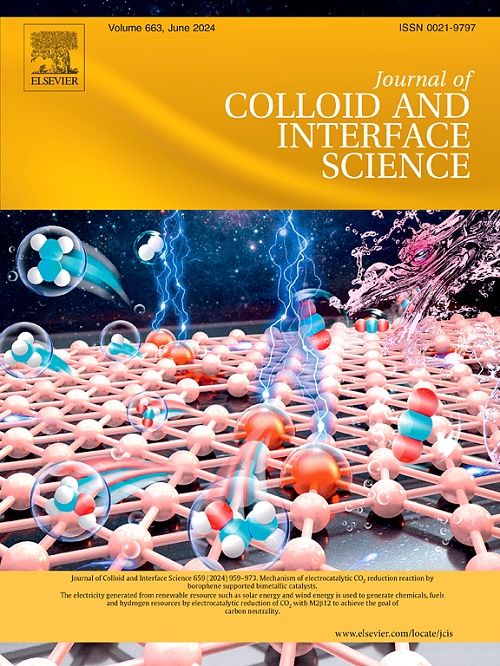Composition-dependent tunability of the cell interactions of hybrid lipid – block copolymer vesicles
IF 9.4
1区 化学
Q1 CHEMISTRY, PHYSICAL
引用次数: 0
Abstract
Hybrid vesicles composed of phospholipids and block copolymers are of interest for a wide range of applications due to the broad tunability of their material properties that can synergistically combine desirable properties of liposomes and polymersomes. A major application of vesicles in biotechnology has been in the field of drug delivery, where understanding and controlling vesicle interactions with cells is of vital importance. Here, we investigate the tunability of hybrid vesicle interaction with three distinct cell lines through modulating non-specific interactions. We formulate vesicles composed of three different constituents, the zwitterionic lipid 1-palmitoyl-2-oleoyl-glycero-3-phosphocholine (POPC), the cationic lipid 1,2-dioleoyl-3-trimethylammonium-propane (DOTAP) and the amphiphilic diblock copolymer Poly(1,2-butadiene)-b-poly(ethylene oxide) (PBD22-PEO14). This enables the tunability of cell interactions through electrostatic attraction to anionic cellular membranes and steric repulsion from the polymeric PEO brush layer. We establish a microfluidic flow protocol to enhance the reproducibility of vesicle-cell interactions by controlling the hydrodynamic stresses during incubation and washing steps. We demonstrate a high degree of tunability of cell interactions and low cytotoxicity across the three cell lines investigated (HFFF2, HEK293, HepG2). These initial findings offer critical insights into the engineering of hybrid vesicles and their potential applications in drug delivery.

杂化脂质嵌段共聚物囊泡细胞相互作用的组分依赖性可调性
由磷脂和嵌段共聚物组成的杂化囊泡具有广泛的应用前景,因为它们的材料特性具有广泛的可调性,可以协同结合脂质体和聚合体的理想特性。囊泡在生物技术中的一个主要应用是在药物传递领域,了解和控制囊泡与细胞的相互作用是至关重要的。在这里,我们通过调节非特异性相互作用来研究杂种囊泡与三种不同细胞系相互作用的可调性。我们制备了由三种不同成分组成的囊泡,即两性离子脂质1-棕榈酰-2-油基-甘油-3-磷脂胆碱(POPC),阳离子脂质1,2-二油基-3-三甲基丙烷(DOTAP)和两亲性二嵌段共聚物聚(1,2-丁二烯)-b-聚环氧乙烷(PBD22-PEO14)。这使得细胞相互作用的可调性通过静电吸引阴离子细胞膜和空间排斥力从聚合物PEO刷层。我们建立了一种微流体流动方案,通过控制培养和洗涤步骤中的流体动力应力来提高囊泡-细胞相互作用的可重复性。我们在研究的三种细胞系(HFFF2, HEK293, HepG2)中证明了细胞相互作用的高度可调性和低细胞毒性。这些初步发现为杂交囊泡的工程设计及其在药物输送中的潜在应用提供了重要的见解。
本文章由计算机程序翻译,如有差异,请以英文原文为准。
求助全文
约1分钟内获得全文
求助全文
来源期刊
CiteScore
16.10
自引率
7.10%
发文量
2568
审稿时长
2 months
期刊介绍:
The Journal of Colloid and Interface Science publishes original research findings on the fundamental principles of colloid and interface science, as well as innovative applications in various fields. The criteria for publication include impact, quality, novelty, and originality.
Emphasis:
The journal emphasizes fundamental scientific innovation within the following categories:
A.Colloidal Materials and Nanomaterials
B.Soft Colloidal and Self-Assembly Systems
C.Adsorption, Catalysis, and Electrochemistry
D.Interfacial Processes, Capillarity, and Wetting
E.Biomaterials and Nanomedicine
F.Energy Conversion and Storage, and Environmental Technologies

 求助内容:
求助内容: 应助结果提醒方式:
应助结果提醒方式:


